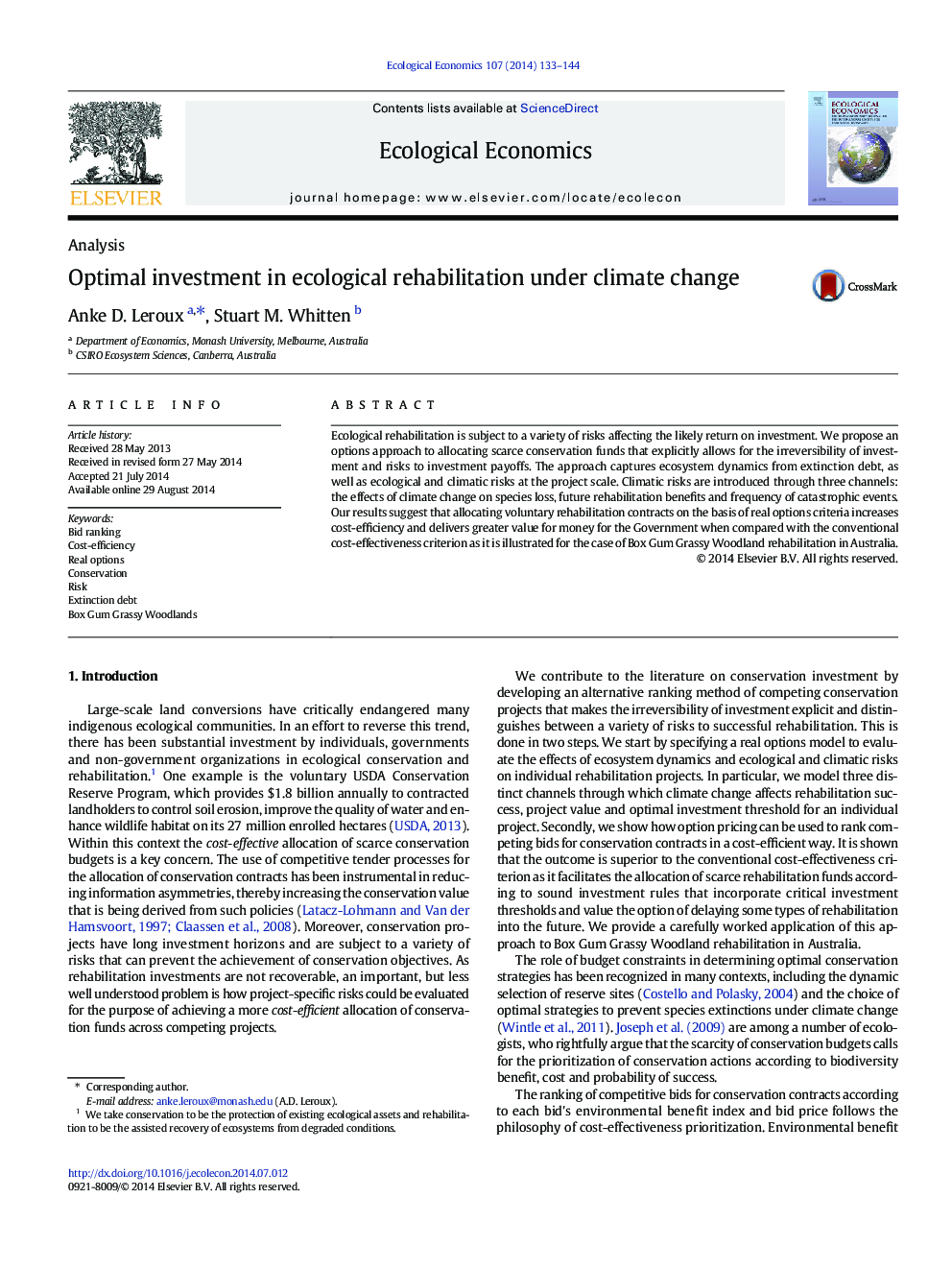| Article ID | Journal | Published Year | Pages | File Type |
|---|---|---|---|---|
| 5049512 | Ecological Economics | 2014 | 12 Pages |
â¢Proposes real options to value and rank rehabilitation projects under investment risk and irreversibilityâ¢Accounts for climate change affecting rehabilitation success and optimal investment via 3 channelsâ¢Develops two alternative competitive bid ranking criteria for conservation auctions that are based on option pricingâ¢Demonstrates superior value for money outcomes compared with the conventional cost-effectiveness criterionâ¢Provides a carefully worked application to Box Gum Grassy Woodland rehabilitation in Australia
Ecological rehabilitation is subject to a variety of risks affecting the likely return on investment. We propose an options approach to allocating scarce conservation funds that explicitly allows for the irreversibility of investment and risks to investment payoffs. The approach captures ecosystem dynamics from extinction debt, as well as ecological and climatic risks at the project scale. Climatic risks are introduced through three channels: the effects of climate change on species loss, future rehabilitation benefits and frequency of catastrophic events. Our results suggest that allocating voluntary rehabilitation contracts on the basis of real options criteria increases cost-efficiency and delivers greater value for money for the Government when compared with the conventional cost-effectiveness criterion as it is illustrated for the case of Box Gum Grassy Woodland rehabilitation in Australia.
